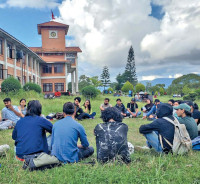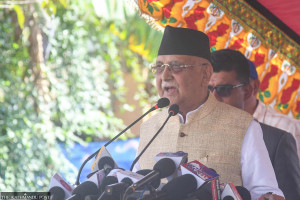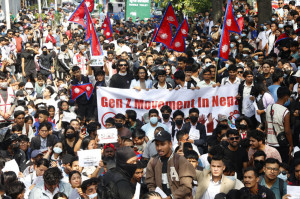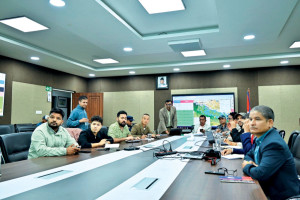Opinion
Living high
The concept of ‘Zomia’ seems to be based on dubious assumptions and is full of abstract, unreliable generalisations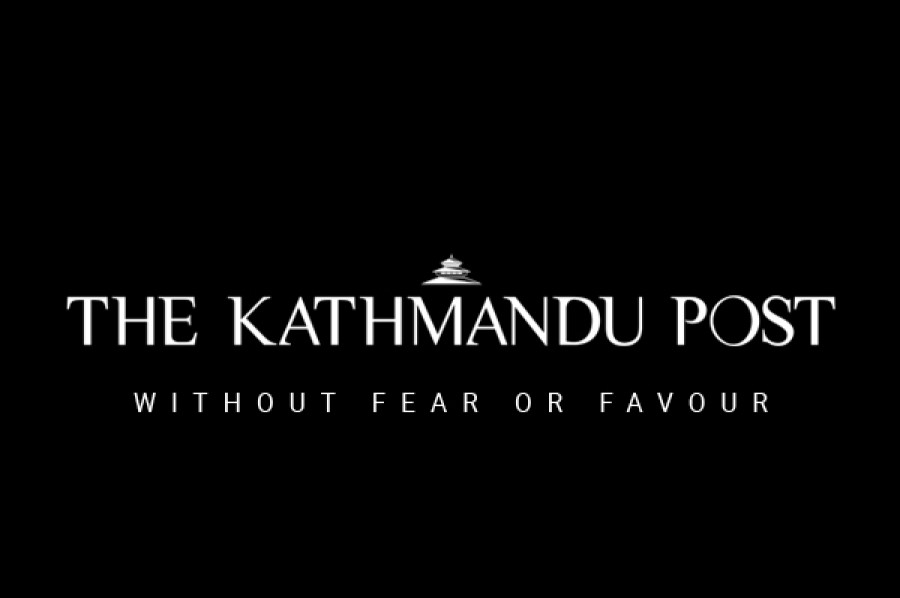
The central Himalayas—where Nepal lies—is generally seen as a hybrid region, an interface where Indo-Aryan and Tibeto-Burman languages and cultures dovetail and overlap. Most social scientists consider that this vast range straddles the border of two of the world’s major cultural areas: South Asia and Central Asia. The uplan d peripheries of Indic and Tibetan cultural forms meet, combine and collide in these valleys. In 1975, James Fisher claimed that: “the Himalayas are not so much a boundary, border, or buffer, as a zipper which stitched together these two densely textured cultural fabrics”. Whatever the case may be, over the years, such an ‘Indo-Tibetan interface’ model has shed light on a number of cultural complexities of the Himalayan region.
Zones of the Zomia
A decade ago, a new paradigm known as Zomia (a term for ‘highlander’ in a number of Tibet-Burman languages spoken in Burma, India and Bangladesh) made its first appearance in Himalayan research. This exotic-sounding name was coined in 2002 by the Dutch social scientist Willem van Schendel in an article published in a geographical journal. He proposed that the highlands of Asia, from the western Himalayan range through the Tibetan plateau to the lower end of the peninsular Southeast Asian highlands be considered a political and historical entity significantly distinct from the usual geographical divisions of Asia: Central, South, East, and Southeast. ‘Zomia’ constitutes, he argued, a neglected transnational area, which overlaps segments of all four sub-regions without truly belonging to any of them. According to him, it is an area marked by a sparse population, historical isolation, political domination by powerful surrounding states, marginality of all kinds, and huge linguistic and religious diversity. In 2007, van Schendel opted to extend Zomia further westward and northward, to include southern Qinghai and Xinjiang within China, as well as a fair portion of central Asia, encompassing the highlands of Pakistan, Afghanistan, Tajikistan, and Kyrgyzstan.
The rationale behind the geographically dominated notion of Zomia (altitude, remoteness, fringe) is the focus on the highland borderlands of Asia and their diverse ethnicities, which amount to between 120 and 150 million people. According to van Schendel, this inland region would be inhabited by populations deprived of independent states and situated on the margins of official borders. The idea is certainly interesting, especially in matter of cross boundaries studies. Such a transnational approach does have considerable potential for generating cross-disciplinary dialogue, notably among global historians, geographers and anthropologists.
Self-governance
In a book published in 2009, The Art of not Being Governed, James C. Scott makes use of this Zomia concept to stress the self-governability of Himalayan people on the fringes and their state avoidance over the past centuries. Scott stresses some other alleged aspects of these groups, such as their relatively egalitarian structure, oral religious tradition and high level of mobility. Admittedly, most of the time, these hinterlands escaped exogenous state political interference. Up to the present day, the history of Nepal shows traces of resistance in many ethnic groups and a real sense of autonomy. It is also true that those faced with conflict or oppression in the southern plains or in the northern kingdoms have taken refuge in these highland, forested zones over the years. Nepal has been populated in this way.
There are many other positive aspects to these viewpoints. Any anthropologist specialised in Nepali studies and who has travelled through Northern and Eastern Burma, and Northern Thailand or Laos, would rapidly reach the conclusion that a number of features are common to the ethnic groups located in central and eastern Nepal, and not only in terms of their mountainous landscape or linguistics. However, a number of theoretical assumptions underlying this concept of Zomia are difficult to accept. My aim here is to point to some of these difficulties and to test the proposals against Nepali realities. I will limit myself to three major aspects.
Debunking the theory
Firstly, the assumption that Zomia is made up of ethnicities living some distance from the seat of regional and global power and often out of reach of the main urban centres is only partially true. I argue that the central Himalayas were not totally secluded in the past and that they were not out of reach, as is asserted. Its present population is the result of historical migrations stretching over centuries. After settling in separate regions, these people never ceased to establish mutual relationships with each other or with cultures to the north, in Tibet, and to the south, in India. Zomian ethnic groups were never wholly isolated from their surroundings. Moreover, this area has always been traversed by highly frequented trans-Himalayan trade routes linking the two regions. These trade routes have had ramifications throughout the highlands.
Secondly, the diversity of situations in this interstitial zone needs to be taken into account. Having worked for more than four decades on one of the main state-centres of the central Himalayas—the Malla city kingdoms of the Kathmandu valley—I am, understandably, inherently reluctant to this idea of a non-state, ungoverned region. Petty kingdoms and chiefdoms were a characteristic of pre-modern Nepali Himalayan populations. Magars and Tamangs keep alive the memory of former kings. State structures were for the most part embryonic, but they did exist.
Thirdly, Zomian peripheries are not the only region in Asia to be characterised by such marginalities. The same model can be applied to a number of fringe regions situated on the Indian subcontinent itself, starting with tribal zones in forested areas. Until recently these zones were not totally included in the kingship political systems of the surrounding caste people. Moreover, their populations are characterised by more or less egalitarian features (despite local chiefdoms and occasionally small kingdoms).
Altogether, the concept of Zomia seems to me to be a contentious notion, based on dubious assumptions and full of abstract, unreliable generalisations. Too much ink has already been spilt on these nebulous theories and wild speculations. Scholars would be better resuming their in-depth, basic studies using primary sources and working from the ground up. Local historiographies as well as studies on inter-dynamic groups and non-caste forms of hierarchy will probably teach us more about the gradual process of how these diverse regions integrated the encompassing states.
Toffin is Director of Research at the National Centre for Scientific Research, France




 14.1°C Kathmandu
14.1°C Kathmandu